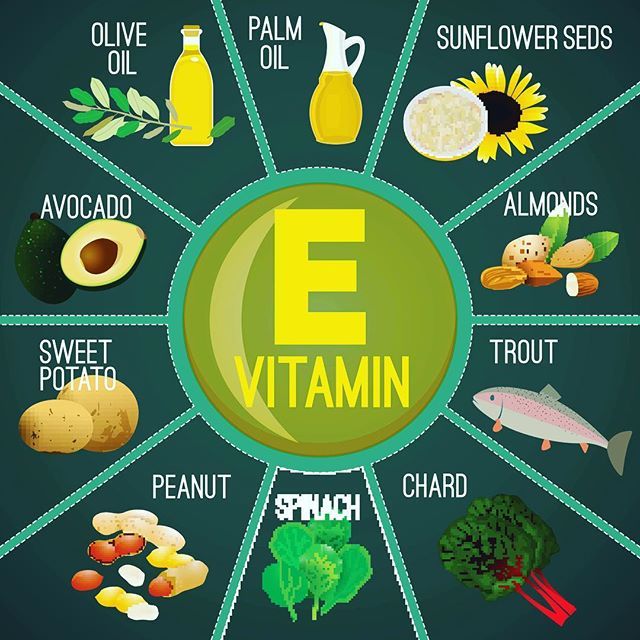Vitamin E is also known as the fat-dissolving vitamin and can be found in different food items such as eggs, vegetables, fruits, and wheat germ oil. Vitamin E is also available in the market in supplement form.[1]

Vitamin E deficiency is very rare and prevalent in those suffering from genetic disorders or were low-weight premature babies. Vitamin E, apart from curing vitamin E deficiencies, also treats other conditions. However, complete scientific research must be done to determine the exact impact of vitamin E on these conditions.[2]
As per the American Heart Association, you should have a balanced diet rich in vegetables, whole grains, and fruits to get your daily dose of antioxidants and vitamin E.[3]
Although there are vitamin- E supplements available in the market, it is better to avoid them, as not many are as effective.
The Top Benefits of vitamin E
Vitamin E is pretty useful and has its own advantages. Some of the prominent benefits of vitamin E include the following.[4]
Antioxidants
Vitamin E is one of the antioxidants that offer protections to cells against damages. It is naturally found in food and can be used as a dietary supplement as well. Vitamin E is fat-soluble, and hence it gets stored by the body and is used when required.
Vitamin E is available in eight different compounds with Alpha-tocopherol is one of the most effective ones.
Long Cell Life
With increasing age, the body’s cells become exposed to free radicals that can damage even the healthy cells. Eventually, free radicals would attack the heart, thereby leading to cardiovascular diseases and even cancer.[5]
Vitamin E is one of the strongest antioxidants that prevent slowing down age and free radical damage.
Extra protection
Vitamin E is extremely effective for those having environmental and lifestyle risk factors.[6] Free radicals can increase by
- Cigarette smoking
- Air pollutant exposure
- Extreme exposure to ultraviolet rays from sunlight
Vitamin E helps in repairing the damaged cells. Vitamin E cannot be a part of your regular diet, so people often prefer getting vitamin E from supplements.
What is vitamin E useful for?
Vitamin E is useful for many diseases and has helped in overall development.[7] Some of the prominent conditions that are scientifically proven to be helpful for the following diseases
Alzheimer’s disease
Earlier research has shown that regular intake of vitamin E can lower the chances of developing Alzheimer’s disease. At the same time, the supplement may not be that effective for treating Alzheimer’s. Moreover, taking anti-Alzheimer medicines with vitamin E can also lower the risk of memory loss.
Beta-thalassemia
Beta-thalassemia is a blood disorder in which the protein level of blood reduces. Mostly, children are prone to beta-thalassemia, but consuming vitamin E can help get over beta-thalassemia.[8]
Glomerulosclerosis
Glomerulosclerosis is a condition that leads to the hardening and scarring of blood vessels. Vitamin E consumption can help to improve glomerulosclerosis, thereby improving kidney function.
Dysmenorrhea
Menstrual cramps or dysmenorrhoea, too, can be consumed two or three days before bleeding starts. Vitamin E is available in the form of fish oil, thereby helping in pain and menstrual cramps. Vitamin E, too, can offer relief.[9]
Intracranial hemorrhage
It is a condition in which bleeding occurs internally. Vitamin E consumption can help avoid bleeding in the skull, mostly for premature infants.
Male Infertility
Male infertility isn’t common, but vitamin E consumption can help improve fertility problems mostly for men, thereby improving pregnancy rates. Both vitamin E and vitamin C have the same benefits for boosting male fertility.[10]
Parkinson disease
People consuming vitamin E with their diet can help lower the risk of Parkinson’s disease. However, vitamin E supplements may not have the same impact as dietary vitamin E for treating Parkinson’s disease.
Rheumatoid Arthritis
Vitamin E consumption with standard treatment can help lower the risk of developing rheumatoid arthritis in people. Moreover, it also avoids the risk of swelling.[11]
Sunburn
Taking vitamin E and vitamin C by mouth can protect against the risk of skin inflammation caused mostly due to UV radiation. Nonetheless, vitamin E alone can have the same impact. Vitamin E, vitamin C, and melatonin can be protecting against UV exposure.
Uveitis
Uveitis is a condition that leads to the swelling or inflammation of the eye. Consuming vitamin E and vitamin C can help enhance vision, thereby lowering the risk of swelling for people suffering from uveitis.[12]

Is vitamin E safe?
Vitamin E is safe, especially if healthy people take it by mouth. However, it is essential to keep a check with the recommended daily dose, which is 22.4IU.[13]
Nonetheless, when vitamin E is taken in high doses, it can be extremely unsafe to use. People suffering from heart disease or diabetes should avoid consumption of 400 IU vitamin E per day. Few pieces of research have also shown that vitamin E can increase the risk of death and also leads to other side effects. Depending on the dosage, it can have more side effects.
Vitamin E is unsafe to inhale, especially for the ones who are into using e-cigarettes and vaping products. However, vitamin e is likely safe to use for healthy people and helps avoid the risk of swelling and itching.
Interactions
Chemotherapy interacts with vitamin E.
Vitamin E, a prominent antioxidant, can help lower the effectiveness of cancer medications, mostly chemotherapy. However, interaction levels are yet to be known.[14]
Niacin interacts with vitamin E
When consumed with vitamin C, selenium, and beta-carotene, vitamin E can be helpful to lower the prominent benefits of niacin. Niacin is known for improving good cholesterol in the body, but vitamin E and other vitamins can lower its risk.
Vitamin E is one of the most prominent vitamins. On that note, do be careful with the dosage and consumption limits.[15]
[1] https://www.ncbi.nlm.nih.gov/pmc/articles/PMC3997530/
[2] Niki E, Traber MG. A history of vitamin E. Ann Nutr Metab. 2012;61:207–12. [PubMed] [Google Scholar]
[3] Zingg JM. Vitamin E: An overview of major research directions. Mol Aspects Med. 2007;28:400–422. [PubMed] [Google Scholar]
[4] Zingg JM. Molecular and cellular activities of vitamin E analogues. Mini Rev Med Chem. 2007;7:543–58. [PubMed] [Google Scholar]
[5] https://www.ncbi.nlm.nih.gov/books/NBK557737/
[6] Niki E, Noguchi N, Tsuchihashi H, Gotoh N. Interaction among vitamin C, vitamin E, and beta-carotene. Am J Clin Nutr. 1995;62:1322S–26S. [PubMed] [Google Scholar]
[7] Behl C, Davis J, Cole GM, Schubert D. Vitamin E protects nerve cells from amyloid beta protein toxicity. Biochem Biophys Res Commun. 1992;186:944–50. [PubMed] [Google Scholar]
[8] https://www.ncbi.nlm.nih.gov/pmc/articles/PMC6266234/
[9] Meydani M. Vitamin E. Lancet. 1995;345:170–5. [PubMed] [Google Scholar]
[10] https://www.ncbi.nlm.nih.gov/pmc/articles/PMC4976416/
[11] Office of Dietary Supplements, National Institutes of Health Dietary Supplement Fact Sheet: Vitamin E. From: www.ods.od.nih.gov/factsheets/vitamine.asp Accessed: Aug 2010.
[12] https://www.ncbi.nlm.nih.gov/books/NBK519051/
[13] https://www.ncbi.nlm.nih.gov/pmc/articles/PMC4578028/
[14] Colombo ML. An update on vitamin E, tocopherol and tocotrienol: Perspectives. Molecules. 2010;15:2103–13. [PMC free article] [PubMed] [Google Scholar]

